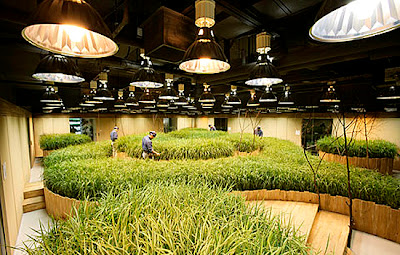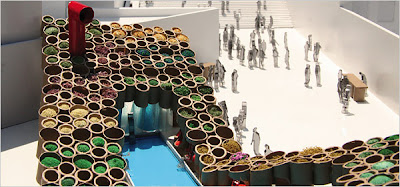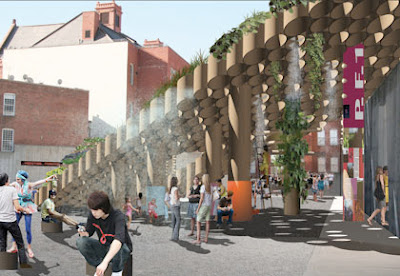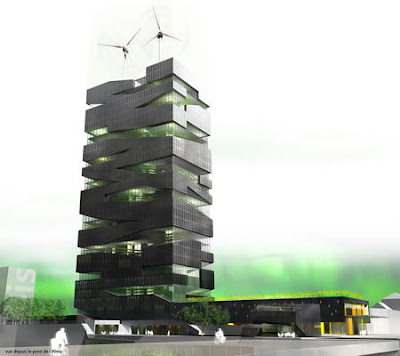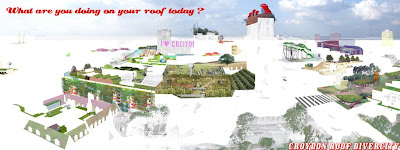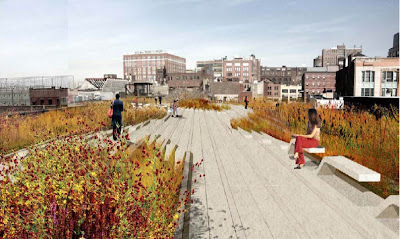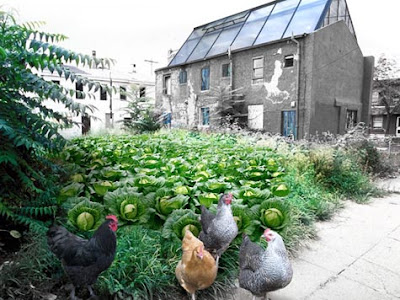 Front Studio's
Front Studio's FARMADELPHIA proposes to transform the urban environment by introducing bucolic farmlands into
the city's urban fabric. Farmadelphia adopts the extensive sprawl of overgrown lots and vacant buildings as a source of inspiration while it fortifies and reinforces the ongoing green legacy of Philadelphia.
Philadelphia would become an 'edible landscape', with vast crop fields, and free roaming farm animals.

The project would also address – or is intended to address – "the rehabilitation of the existing city fabric by proposing ideas for vacant buildings that would allow the present-day character to remain while creating new uses."

Whole sections of the city would be deliberately cultivated. Or, from a slightly different perspective, it's the controlled re-wilding of the city.

Some appropriate crops for the proposed agricultural stabilization of the city might include the following, the architects suggest:
—start with low maintenance, easy to grow, and profiting crops; consider perennial crops such as asparagus, shallots, garlic and herb varieties
—other crops include shade tolerant, easy to grow kale, sweet potatoes, lettuce
—other crops that do well in Philadelphia climate: collard greens, broccoli, mustard greens, corn, raspberry bushes

Those plants, in particular, would form a biosystem that could help push the city onto a seven year agricultural plan – after which this newly implanted ecosystem would level off, forming something like a cultivated permaculture.
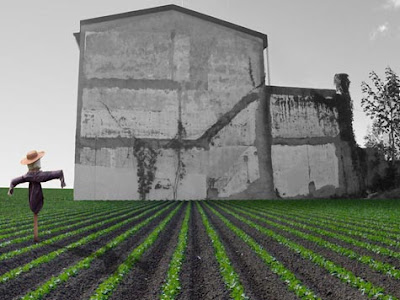

find out more on
Front Studio's website or see the panels
hereRelated posts:
Urban Agriculture

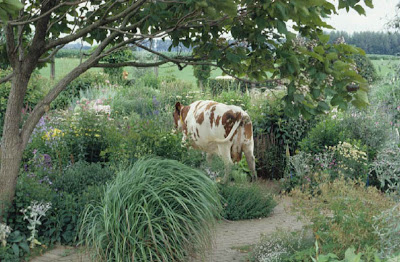


 Anti wrinkle agent - Skin care- 100%organic cow manure
Anti wrinkle agent - Skin care- 100%organic cow manure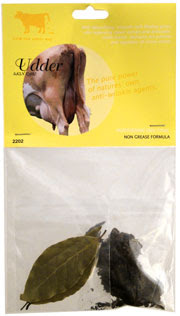 For strong teeth and fresh breath - Udder tooth polish - 100%organic cow manure ash
For strong teeth and fresh breath - Udder tooth polish - 100%organic cow manure ash







